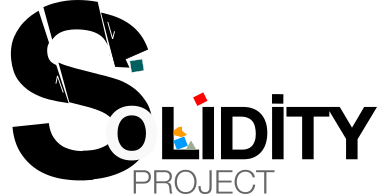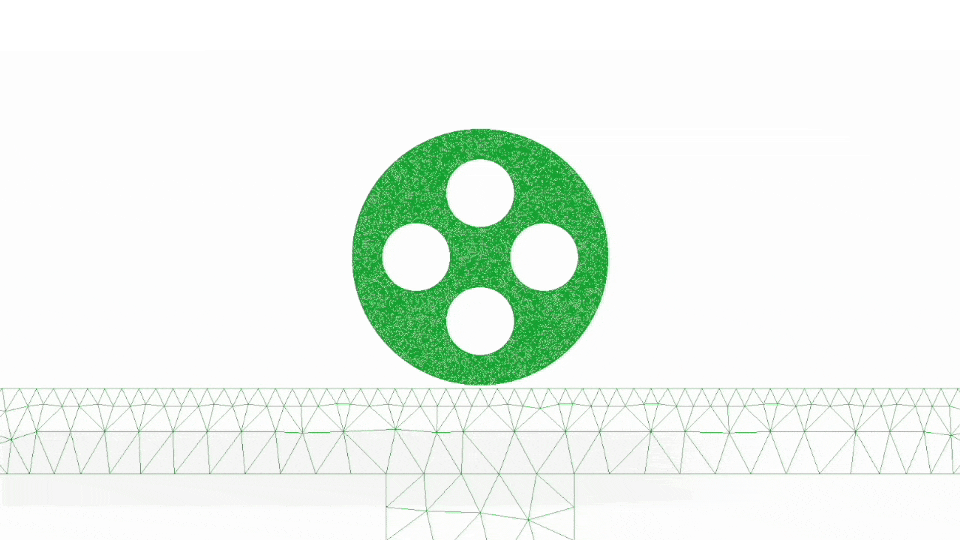Industrial Context
Ceramic particles are pelletized and fired to produce high porosity catalyst pellets of complex shapes.
These pellets fill cylindrical reactor columns with particulate packing structures that are key to the in-service performance, but will suffer breakages, which impact on catalyst performance.
The combined Finite-Discrete Element Method (FEMDEM) is ideally suited to capturing both the multi-body pellet interactions and pellet fracture and fragmentation.
Mechanical Characterization
A mechanical characterization of prismatic and cylindrical ceramic specimens has been undertaken.
Each set of specimens has been characterised by means of micro- and nano-indentations, ultrasonic and strength tests – i.e. three-point bending tests (bars) and Brazilian tests (cylinders). Standard laboratory rigs are generally too compliable for capturing the deformations of stiff and tiny ceramic specimens. For this reason, a novel digital image correlation methodology has been developed to obtain both strength and stiffness from three-point bending tests on alumina bars which would have been otherwise impossible.
Fracture Propagation
FEMDEM numerical results have been compared to the corresponding experimental results (i.e. loading curves and displacements from digital image correlation analyses) to investigate the code capability to describe fracture in highly stiff and brittle porous media.
Consequently the code has been used to evaluate the pre- and post-fragmentation behaviour of complex shaped catalyst supports due to uniaxial compression at different orientations and impacts.
3D Packing
The FEMDEM code has been also used to simulate the deposition of cylindrical catalyst supports and other complex-shaped bodies in a cylindrical container. A post processing tool has been implemented to extrapolate the packing density profiles, packing structure, bulk porosity and orientation distributions of the resulting bodies making up the pack of pellets. The numerical results have then been compared with the corresponding experimental packing density profiles and orientation distributions published in the literature.
Conference Presentations
5th International Conference on Particle-Based Methods
Invited presentation
University of Hannover, Hannover, Germany
26-28 September 2017
7th International Conference on Coupled Problems in Science and Engineering
Invited presentation
Rodos Palace International Convention Center, Rhodes, Greece
12-14 June 2017
7th International Conference on Discrete Element Methods
Presentation **Best Student Paper Award**
Dalian University of Technology, Dalian, China
1-4 August 2016
IFPRI Robert Pfeffer Symposium and UK Particle Technology Forum 2016
Presentation
University of Surrey, Guildford, United Kingdom
15-16 June 2016
Johnson Matthey Academic Conference 2016
Presentation
Imago conference centre, Loughborough University, Loughborough, United Kingdom
12-13 April 2015
4th International Conference on Particle-Based Methods
Presentation
Technical University of Catalonia, Barcelona, Spain
28-30 September 2015
Johnson Matthey Academic Conference 2015
Poster presentation
Imago conference centre, Loughborough University, Loughborough, United Kingdom
8-9 April 2015
12th UK Particle Technology Forum 2014
Poster presentation
Manchester conference centre, Manchester, United Kingdom
16-17 September 2014
Robert Pfeffer Symposium
Poster presentation
School of Engineering, University of Edinburgh, Edinburgh, United Kingdom
25 June 2014
Johnson Matthey Academic Conference 2014
Poster presentation
Imago conference centre, Loughborough University, Loughborough, United Kingdom
15-16 April 2014
References
Farsi A, Xiang J, Latham JP, Carlsson M, Stitt EH, Marigo M,Does shape matter? FEMDEM estimations of strength and post failure behaviour of catalyst supports, 5th International Conference on Particle-Based Methods, 2017
Farsi A, Xiang J, Latham JP, Carlsson M, Stitt EH, Marigo M, Simulation and characterisation of packed columns for cylindrical catalyst supports and other complex-shaped bodies, 7th International Conference on Discrete Element Methods, 2016
Farsi A, Xiang J, Latham JP, Pullen AD, Carlsson M, Stitt EH, Marigo M, An application of the finite-discrete element method in the simulation of ceramic breakage: Methodology for a validation study for alumina specimens, 4th International Conference on Particle-based Methods, 2015

